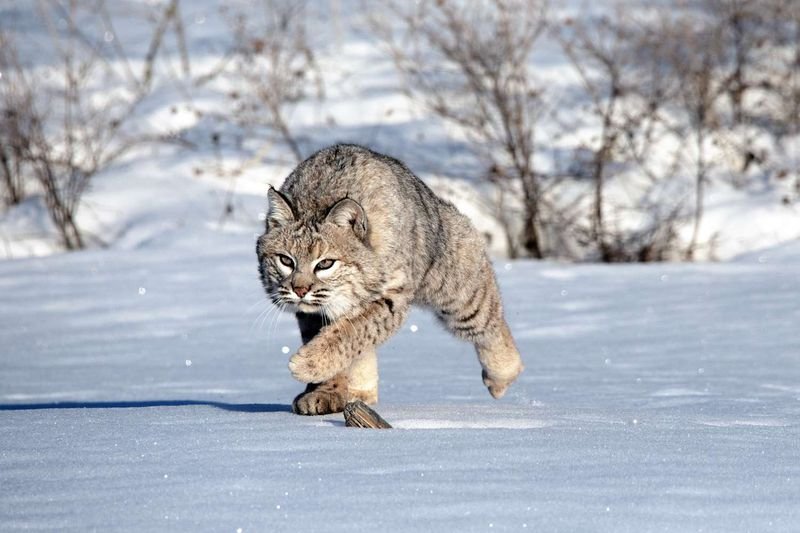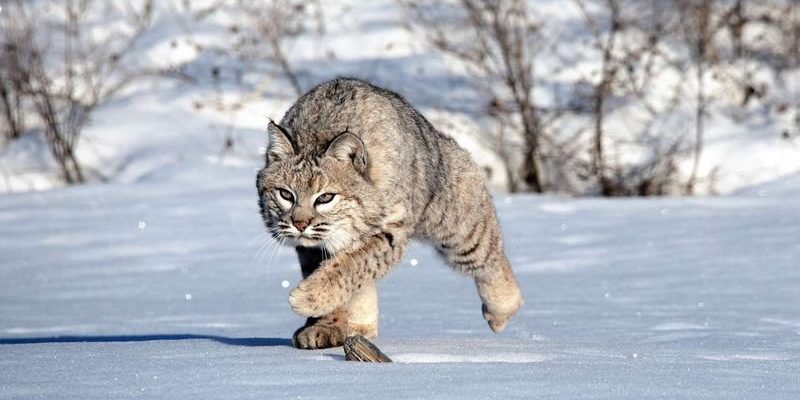
Bobcats are more than just a pretty face. They play an essential role in their ecosystem and have a rich history in American folklore. But with all the myths swirling around, it’s no wonder that many people don’t grasp the reality of these wild animals. In this article, we’ll explore the most common myths and misconceptions about bobcats, shedding light on what makes them truly special. Grab your favorite drink, and let’s dive into the world of these intriguing creatures!
Myth 1: Bobcats Are Small House Cats
You might think that since bobcats have “cat” in their name, they’re just tiny versions of your beloved feline friend. Honestly, that couldn’t be further from the truth! Bobcats are quite a bit larger than typical house cats. An adult bobcat usually weighs between 15 and 35 pounds, while house cats typically weigh around 8 to 10 pounds. Imagine your cat doubling in size—that’s a bobcat!
Not only are they larger, but bobcats also sport those distinctive tufted ears and a short “bobbed” tail. Their fur is often a mix of brown, gray, and tan, with spots and stripes to help them blend into their surroundings. While house cats might curl up in a sunny spot indoors, bobcats are wild animals that thrive in a variety of habitats, from forests to deserts.
Habitat Differences
Bobcats are more likely to be found roaming through rural and suburban areas, while house cats prefer the coziness of our homes. While both can be agile hunters, bobcats hunt for their food in the wild, preying on rabbits, birds, and rodents. Their impressive hunting skills just can’t be compared to the playful pounces of your average house cat.
Myth 2: Bobcats Are Aggressive Towards Humans
You might be wondering if bobcats are dangerous and if they might attack. Here’s the thing: bobcats are typically shy and elusive creatures. They’re not out to get you! In fact, they generally prefer to avoid humans whenever possible. If you ever spot a bobcat in the wild, consider yourself lucky— it’s likely running away from you!
It’s important to remember, though, that like any wild animal, bobcats can feel threatened if cornered. If a bobcat has kittens nearby or feels its space is invaded, it might act defensively. But in most cases, they’ll just slip away into the brush, darting out of sight.
Understanding Their Behavior
So, what should you do if you encounter one? Stay calm and give the bobcat plenty of space. Making loud noises or waving your arms can help scare them away. After all, they’re more interested in avoiding confrontation than engaging with humans.
Myth 3: Bobcats Are Just Mini Lynxes
Another common misconception is that bobcats are simply smaller versions of lynxes. While they do share some similarities, like tufted ears and a similar body shape, they are distinct species. Bobcats and lynxes are related, but each has its characteristics that set them apart.
Lynxes tend to be larger, with long legs and bigger tufts on their ears. Their fur is also thicker, adapted to colder climates, and has a more pronounced ruff of fur around their face. In contrast, bobcats are more adaptable and can thrive in a variety of environments, from wooded areas to suburban backyards.
Genetics Matter
Genetically, bobcats and lynxes diverged millions of years ago. So, while they may look a bit similar, it’s like comparing apples to oranges. They’re both cool in their own right, but it’s essential to appreciate the unique traits of each.
Myth 4: Bobcats Are Nocturnal Only
Many people assume that bobcats are only active at night, but that’s a bit misleading. While they are indeed crepuscular creatures, meaning they’re most active during dawn and dusk, they won’t shy away from hunting during the day or night. This flexibility allows them to adapt to their environment and prey availability.
Depending on their location, you might spot a bobcat prowling around during the day, especially if they’re in an area where human activity is minimal. As opportunistic hunters, they’ll take advantage of any chance they get to find food.
Time of Day and Hunting
This adaptability helps bobcats thrive in various habitats. For instance, in rural areas, they’re more likely to be seen during the day, while in heavily populated places, they may stick to the cover of darkness.
Myth 5: Bobcats Are Rare in the Wild
Many folks believe bobcats are endangered or on the brink of extinction. That’s simply not the case. In fact, bobcats have a stable population across much of the United States. Although they faced challenges due to habitat loss and hunting in the past, conservation efforts have helped numbers bounce back significantly.
Today, you can find bobcats in 47 states, primarily in the eastern and southern parts of the country. They’ve adapted well to human encroachment, often found near urban areas.
Conservation Success Stories
Conservation groups actively work to ensure the continued health of bobcat populations. By protecting their habitats and promoting awareness, we can continue to enjoy seeing these graceful creatures in the wild.
Myth 6: Bobcats Don’t Make Sounds
If you think bobcats are silent creatures, you’ve got another thing coming! They’re quite vocal and can produce a range of sounds. From their characteristic “screams” to low growls, they communicate with each other, especially during mating season or when caring for their young.
Many people are surprised to learn that bobcats can even make a sound similar to a domestic cat’s meow. It’s a little eerie when it echoes through the woods at night. You might not realize it, but those sounds are part of their rich communication system.
Understanding Bobcat Communication
By learning more about how bobcats communicate, we can deepen our appreciation for these amazing animals. Whether they’re warning others of danger or attracting a mate, their vocalizations hold a lot of significance in their social structure.
In a world filled with myths and misconceptions about bobcats, it’s essential to separate fact from fiction. These incredible animals are not just oversized house cats nor scary monsters lurking in the shadows. They play a vital role in our ecosystems and demonstrate adaptability and resilience.
By understanding the truths about bobcats, we can appreciate their unique place in nature and work towards coexisting harmoniously with them. Next time you hear a rustling in the bushes, instead of fearing the unknown, remember the magic of the bobcat and the fascinating life it leads just out of sight.

